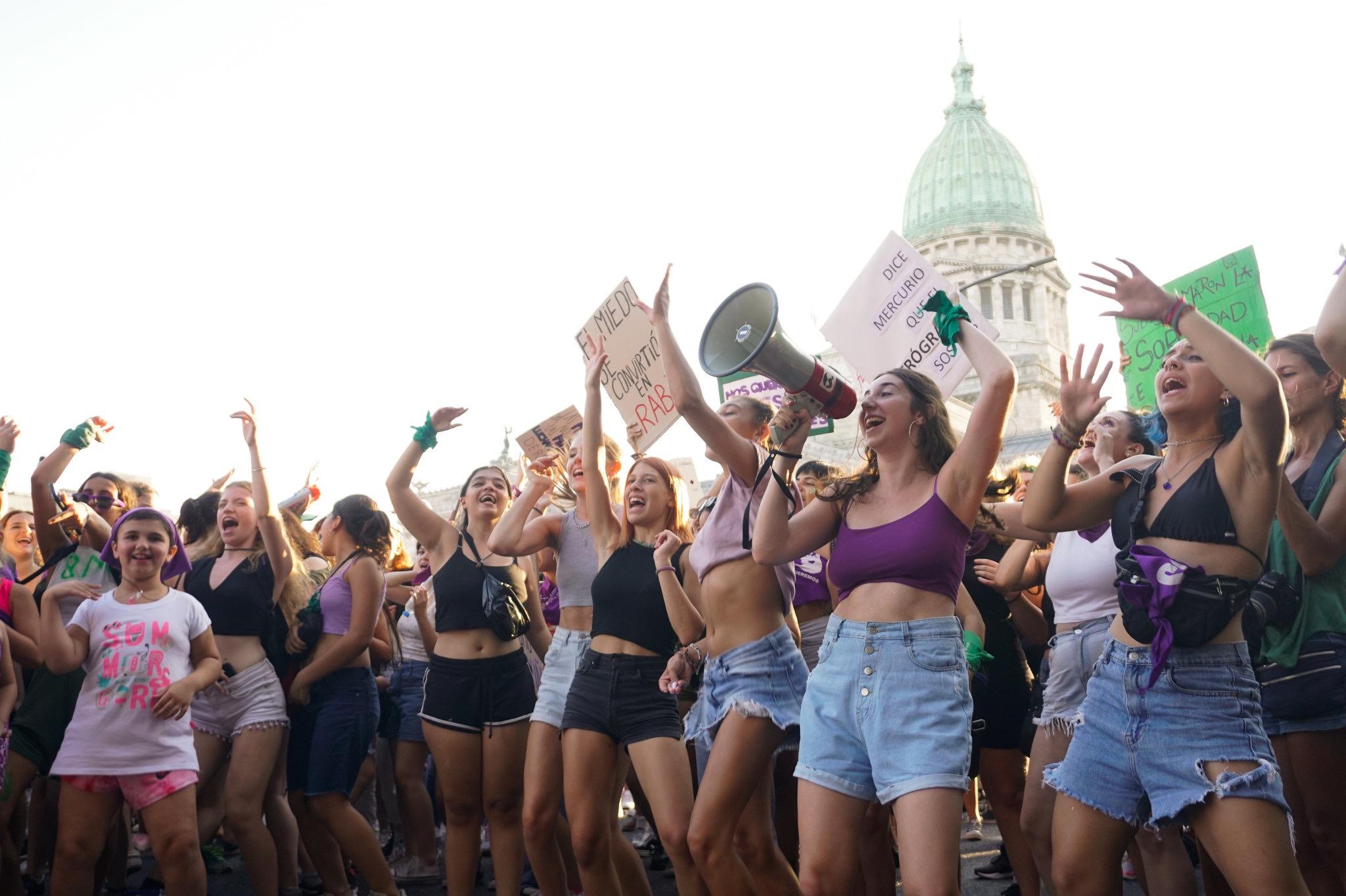
Around the Globe, Women Rally for Equity
From Mexico to Mongolia, here are the most powerful photos from International Women’s Day.
International Women’s Day is a worldwide call to action for equity. As a news organization with an all-women reporting team, we understand that equity goes beyond equality. It requires recognition that the fight for women’s rights is inherently intersectional, presenting unique systemic barriers for women from marginalized communities. In many nations around the world, these obstacles are compounded by significant cultural, legal and societal hurdles.
Compelled to veil their hair and bodies, women in Iran routinely face gender-based violence and wage a historic battle for their basic rights. In Mexico, violence against women and femicide rates continue to rise; each day, 10 women or girls are killed. Meanwhile, in the United States, women grapple with the loss of abortion protections and bodily autonomy.
These issues have been widely covered by international news outlets while equally pressing matters continue to be overlooked and underreported. Since 2006, Global Press Journal’s local women journalists have reported on the ground, sharing firsthand accounts of these issues from the communities directly affected. In Zimbabwe, teenage girls are subject to ongoing sexual exploitation, with 1 in 3 girls raped or sexually assaulted before the age of 18. In Mongolia, women activists are working to end the practice of virginity testing in schools. In Democratic Republic of Congo, gender discrimination has left many girls without even a basic education. And in Argentina, health care discrimination against trans women has resulted in a life expectancy of just 35-40 years old.
This week, as Global Press Journal celebrated 17 years of world-class international journalism, our local reporters covered International Women’s Day events across the globe, from the Voz de los Desaparecidos (Voice of the Disappeared) march in Puebla, Mexico, to a performance to raise awareness about digital sexual violence in Kathmandu, Nepal, and debates on critical women’s issues in Port-au-Prince, Haiti. It’s a stark reminder that fighting for women’s equity isn’t just about advocating for change in our own communities; it’s about advocating for the freedom of all women, everywhere.
Here are some of the most powerful images our local women journalists captured as the world came together to celebrate International Women’s Day.
—Shanté Cosme, Chief Content Officer
Argentina

The women of Latin America hold some of the world’s largest street demonstrations for International Women’s Day, and as always, Argentina honored the region’s fierce feminist tradition. Around here, the day is increasingly called International Feminist Strike Day. Women have been staging regular strikes in Argentina since 2016, after three men brutally raped and murdered 16-year-old Lucía Pérez in Mar del Plata, a seaside resort south of Buenos Aires.
Buenos Aires
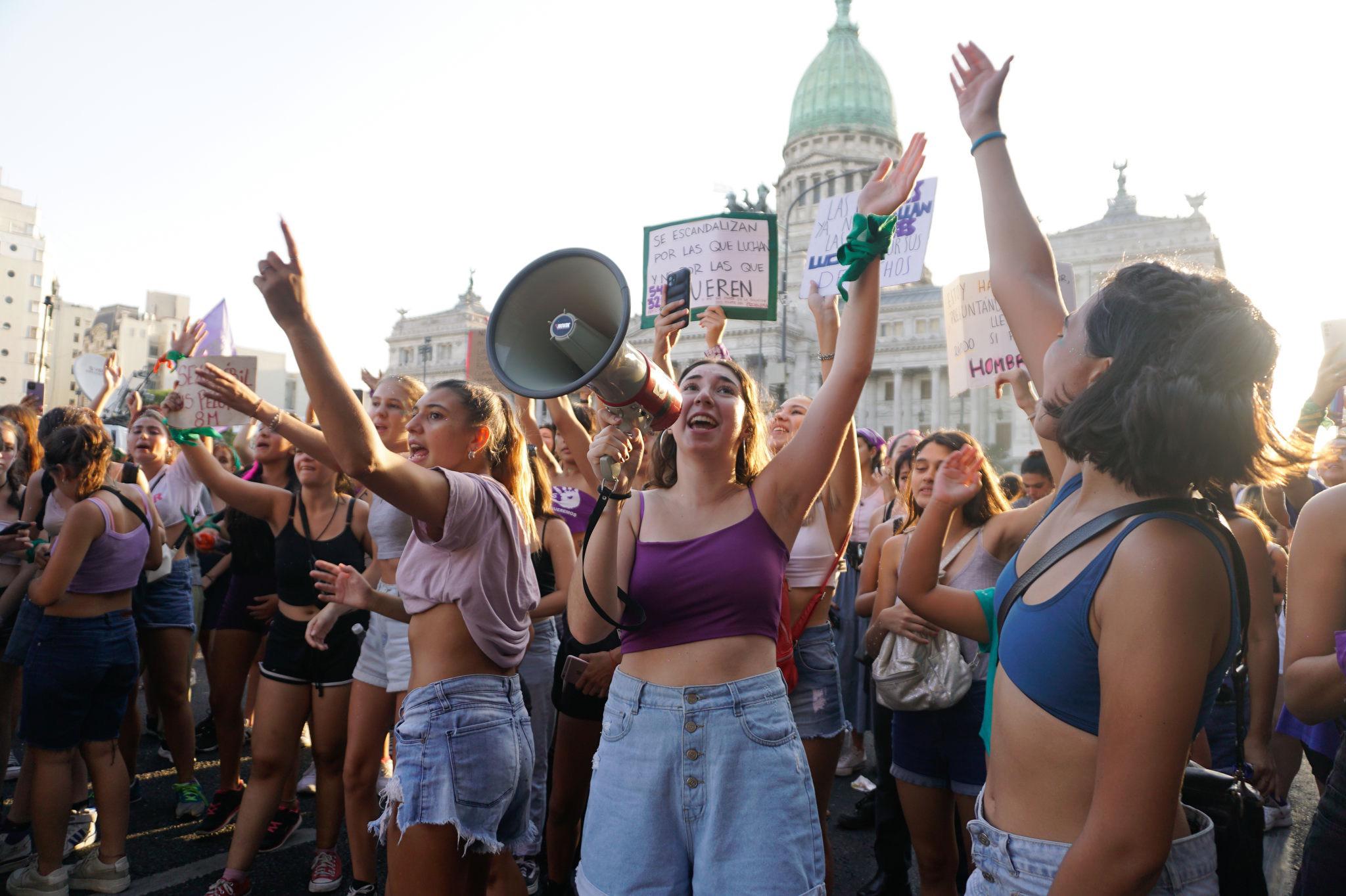
Lucila Pellettieri
Malena Gómez Faraci, 17, Sachi Rosenthal, 16, and fellow young women sing and dance to feminist chants at an International Women’s Day protest in front of the Argentine Congress in Buenos Aires.
Mexico

Mexico has the world’s eighth-highest femicide rate, according to the United Nations Office on Drugs and Crime. In 2021, Mexican courts classified 966 homicide cases as femicides — meaning that in these cases, women were targeted and murdered because they were women. On International Women’s Day, commonly referred to as 8M, Mexicans remembered and honored these women as they called for justice.
Chiapas
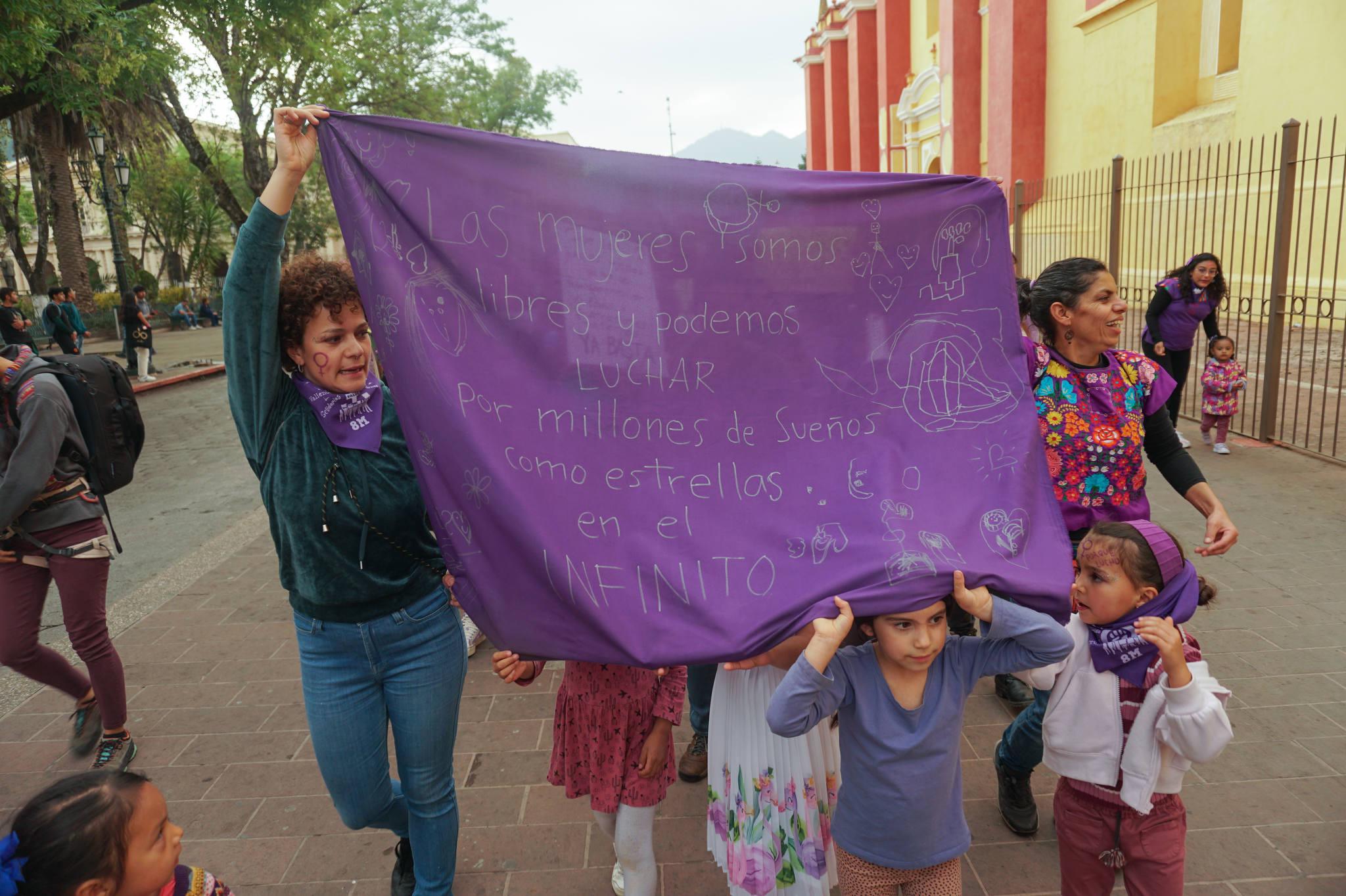
Adriana Alcázar González
A woman and her children hold a blanket that reads, “Women are free, and we can fight for our millions of dreams, like stars in the infinity,” at a march on International Women’s Day in San Cristóbal de Las Casas, Chiapas.

Marissa Revilla
An altar dedicated to women who have died by femicide at the cathedral square in San Cristóbal de Las Casas, Chiapas. To commemorate International Women's Day, local women organized the Feminist Fair for Memory, an event at the square with music performances and an open mic.
Chihuahua
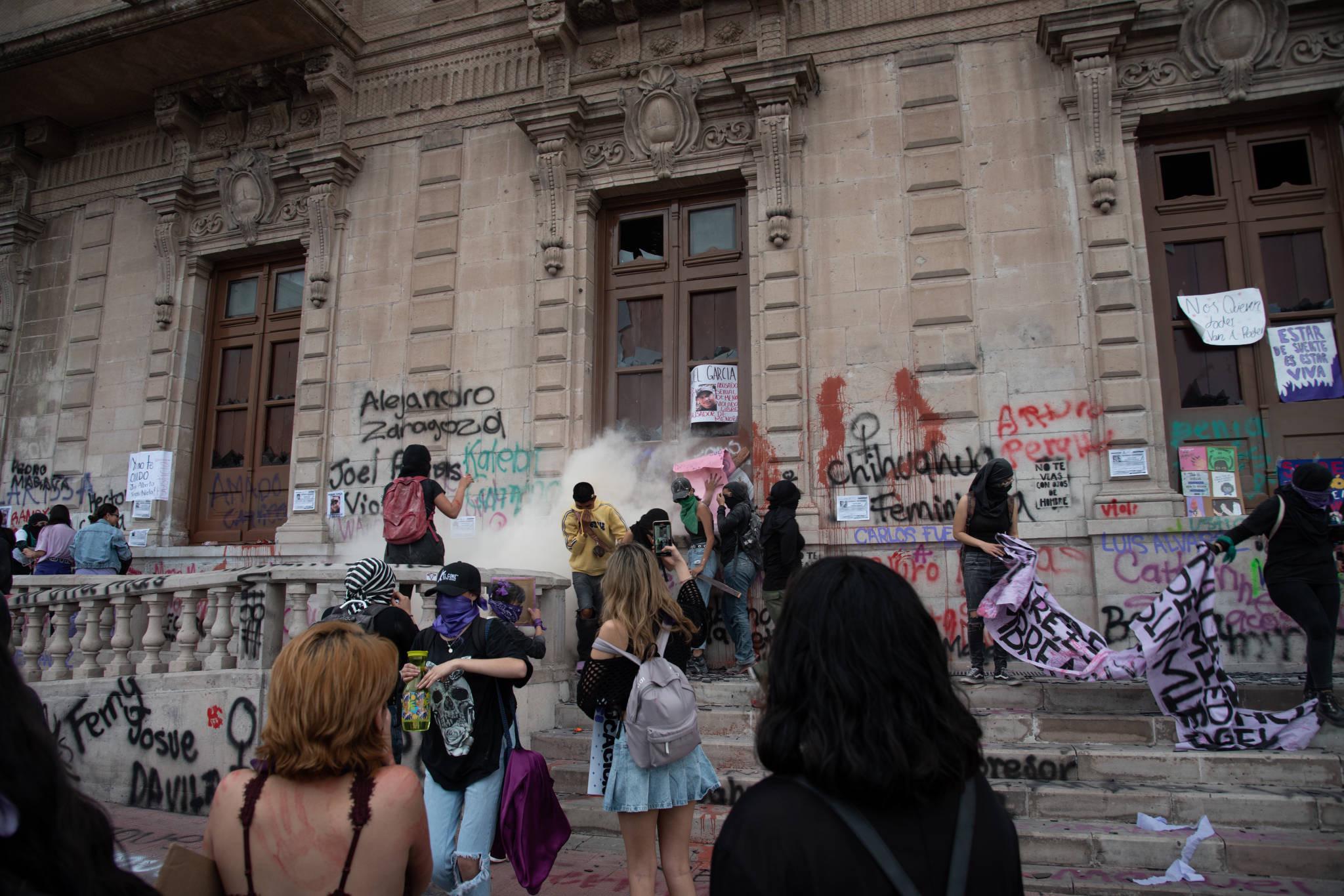
Lilette A. Contreras
Fire extinguishers are deployed from inside the state government palace to disperse people who graffitied the building’s facade during demonstrations on International Women’s Day in Chihuahua.
Guerrero

Avigaí Silva
A woman fires a smoke gun during an International Women’s Day march in Chilpancingo de los Bravo, Guerrero.
Mexico City
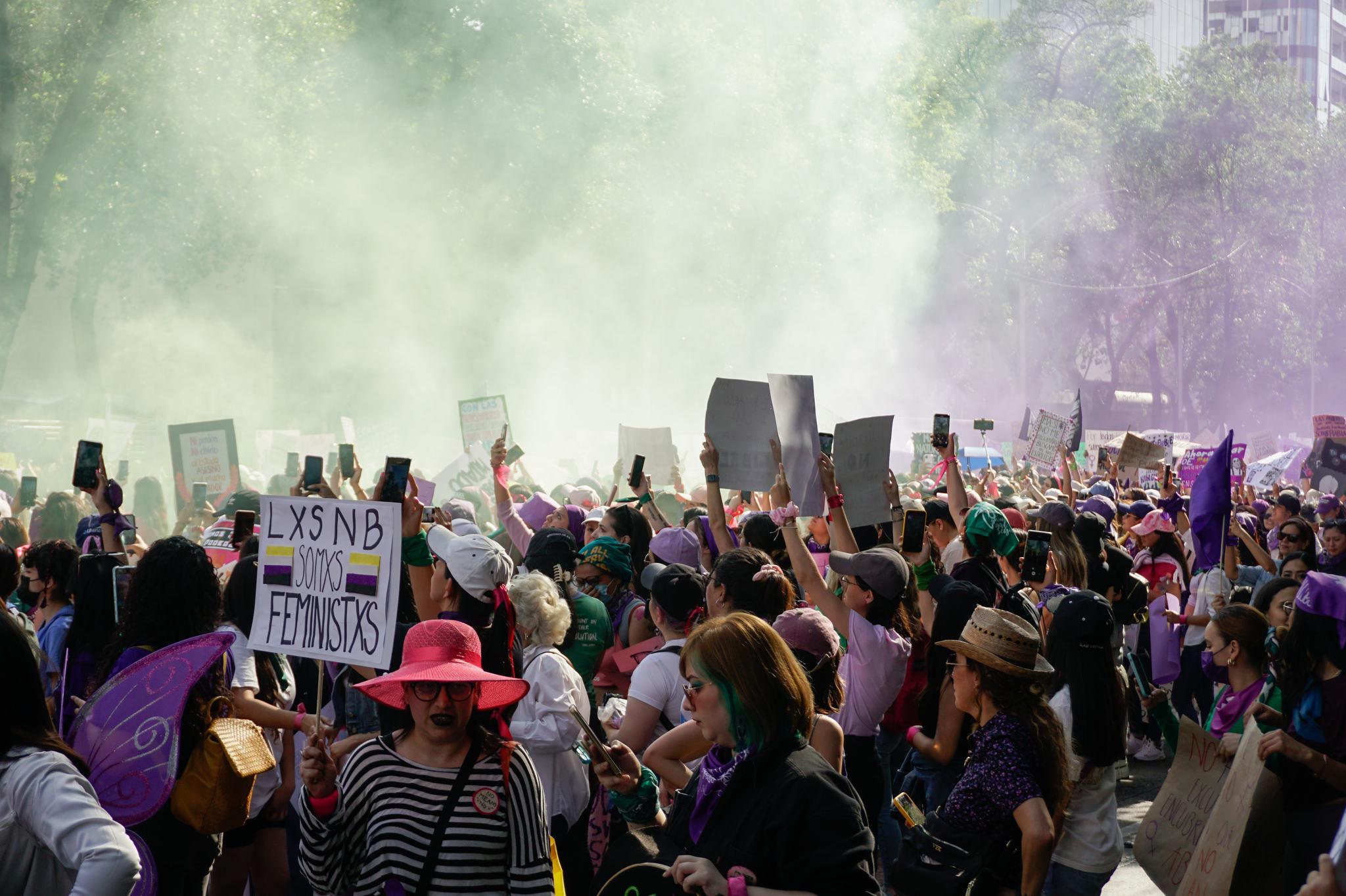
Mar García
A crowd fires smoke guns in green, the worldwide color of the struggle for women’s reproductive rights, and purple, commonly associated with feminist and women’s movements, in Mexico City.

Aline Suárez del Real
Teenagers pose for a portrait at an International Women’s Day march in Mexico City. The sign in the middle reads, “For all of those who didn’t make their dream of celebrating their 15th birthdays come true.” In Mexico, as in many Latin American countries, families often celebrate their daughters’ 15th birthdays with lavish parties known as quinceañeras. Traditionally, the celebration marks a girl’s transition into adulthood.
Oaxaca
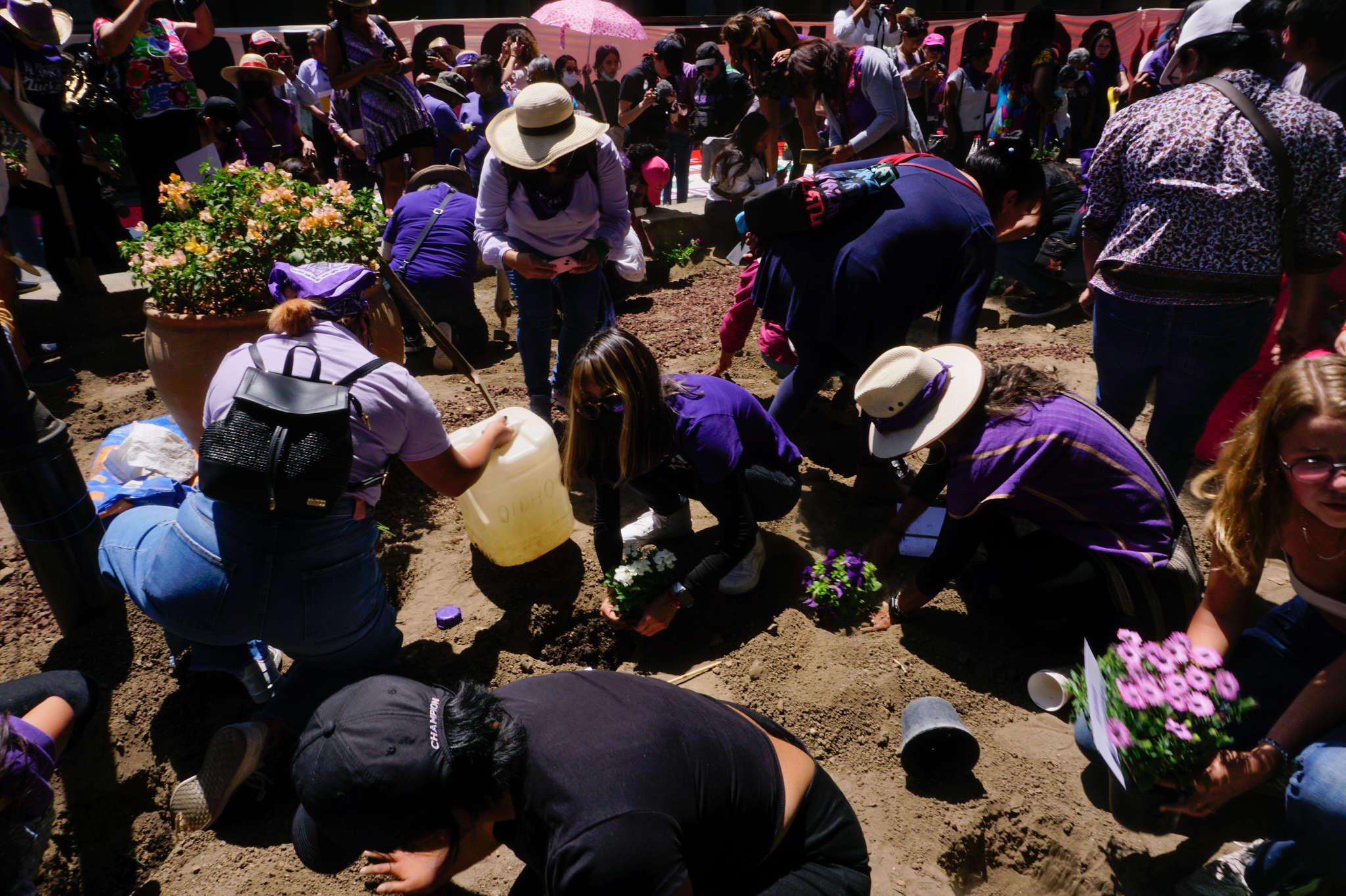
Ena Aguilar Peláez
Women plant white and purple flowers in front of the government palace in the city of Oaxaca de Juárez to honor those who have died by femicide.
Puebla
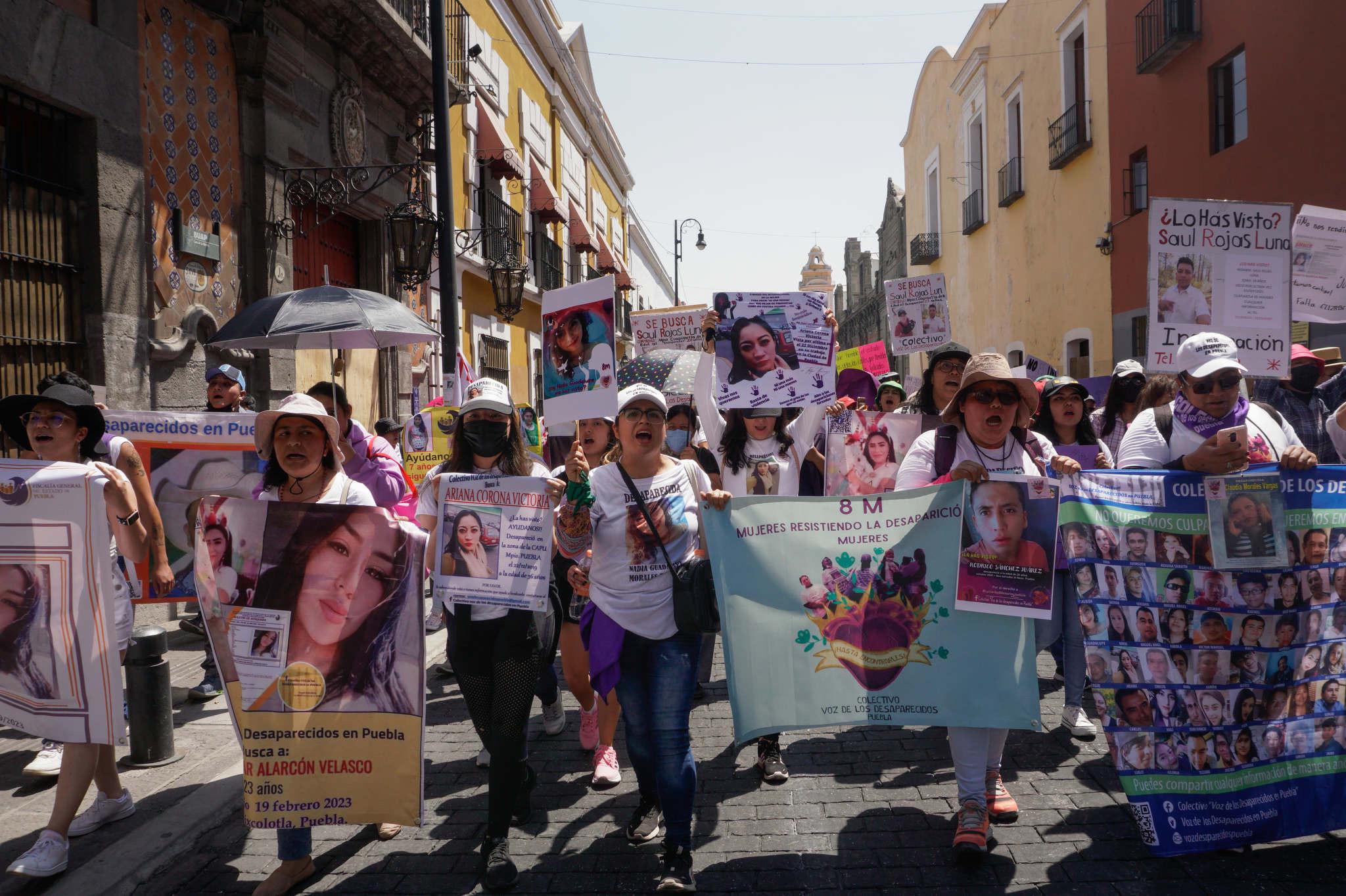
Patricia Zavala Gutiérrez
People hold signs and photos of their forcibly disappeared loved ones in a demonstration organized by the collective Voice of the Disappeared for International Women’s Day in the city of Puebla, Mexico. With the motto “Women resisting disappearances,” the crowd marched from the local office of Puebla’s Commission for the Search of Disappeared Persons to the city’s main square.
Puerto Rico

Gender violence was the prevailing theme in Puerto Rico’s demonstrations. In the town of Mayagüez, a student organization staged a silent march on the local campus of the University of Puerto Rico to honor women who have died by femicide.
Mayagüez

Coraly Cruz Mejías
Students and staff from Siempre Vivas, a student organization that assists women who’ve suffered gender violence, march in silence with a Puerto Rican flag on the University of Puerto Rico’s Mayagüez campus.
Haiti

Haiti plunged into a political crisis following the assassination of President Jovenel Moïse in July 2021. A month later, a devastating earthquake killed more than 2,200 people. Amid such a fraught situation, Haiti’s International Women’s Day was one of reflection, with conferences, talks and performances around the country.
Port-Au-Prince
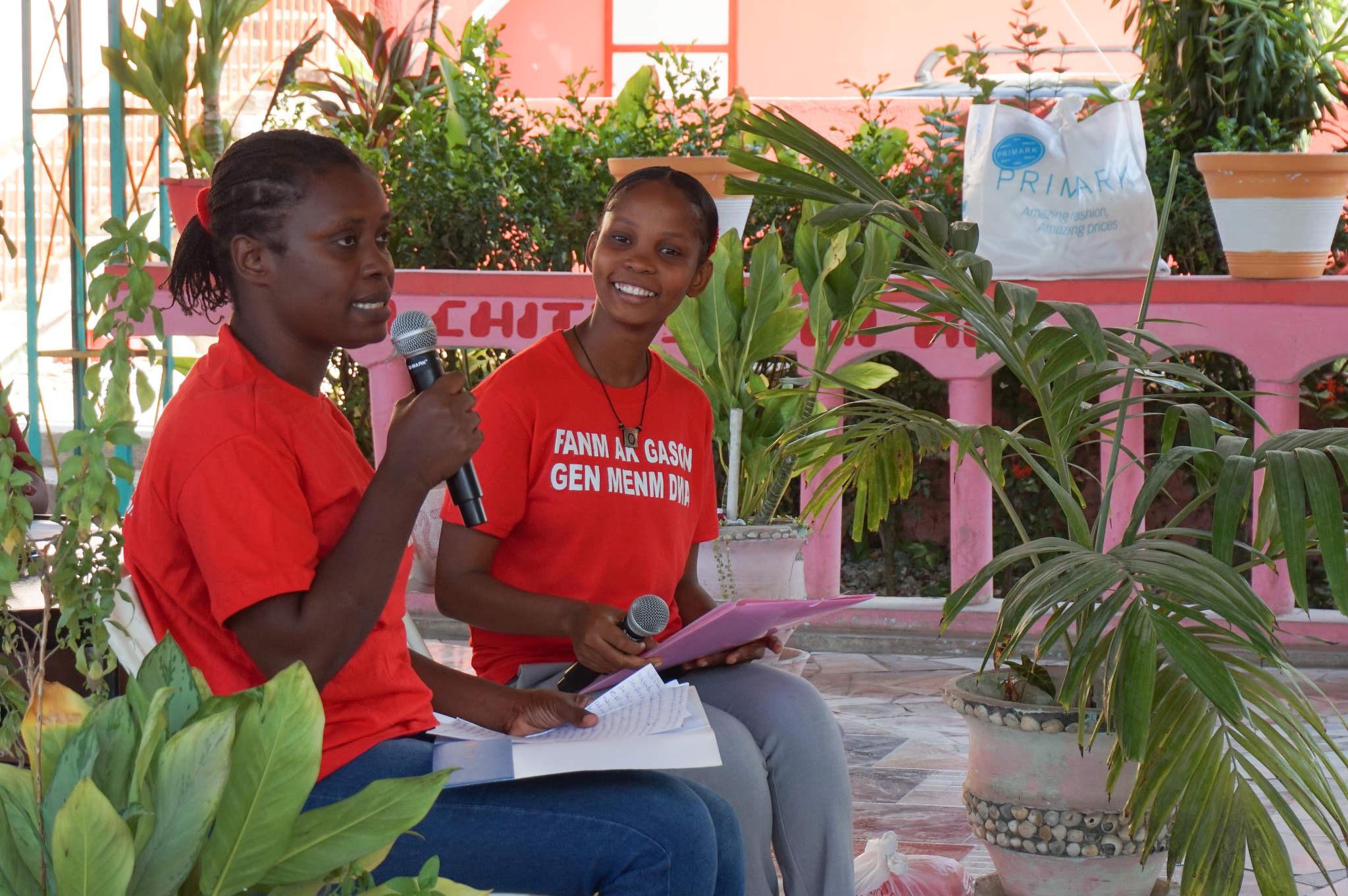
Anne Myriam Bolivar
Gérole Augustin, left, coordinator of the Cluster of Women’s Organizations of Léogane and Gressier, and Olsen Auguste, a member, speak at a conference in Gressier, a commune on the outskirts of Port-au-Prince.
Cap-Haïtien
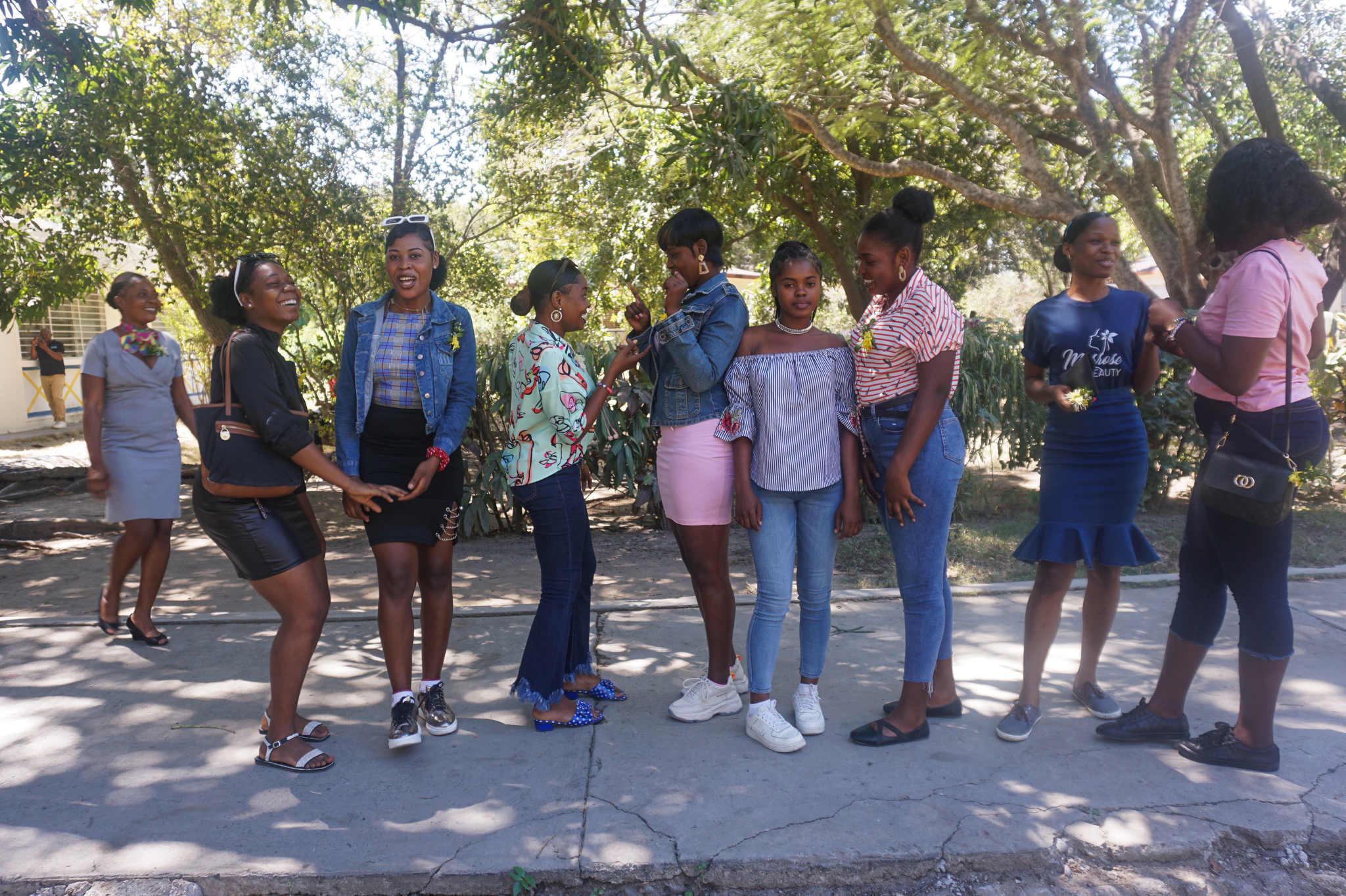
Wyddiane Prophète
Students attend a conference, “The Haitian Woman in the Culture: Between Marginalization and Struggle for Emergence,” at SOS Professional School in Cap-Haïtien.
Port-de-Paix

Jusly Felix
Local theater troupe Top Akabi stages an open-air play to call out gender violence in Port-de-Paix, in northwestern Haiti.
Nepal

Nepal has the third-highest rate of child marriages in Asia, and menstrual huts persist, despite being outlawed in 2005. This International Women’s Day, young women held their protest signs high in Kathmandu. Others staged performances to highlight online harassment, while some parts of the country hosted cycling and walking events.
Kathmandu

Yam Kumari Kandel
Dressed in the traditional garments of the Tharu people of Nepal, Bidisha Mishra, 19, holds a sign in Bhrikutimandap, Kathmandu, to mark International Women’s Day. The sign reads, “She thought she could, so she did.”
Lalitpur
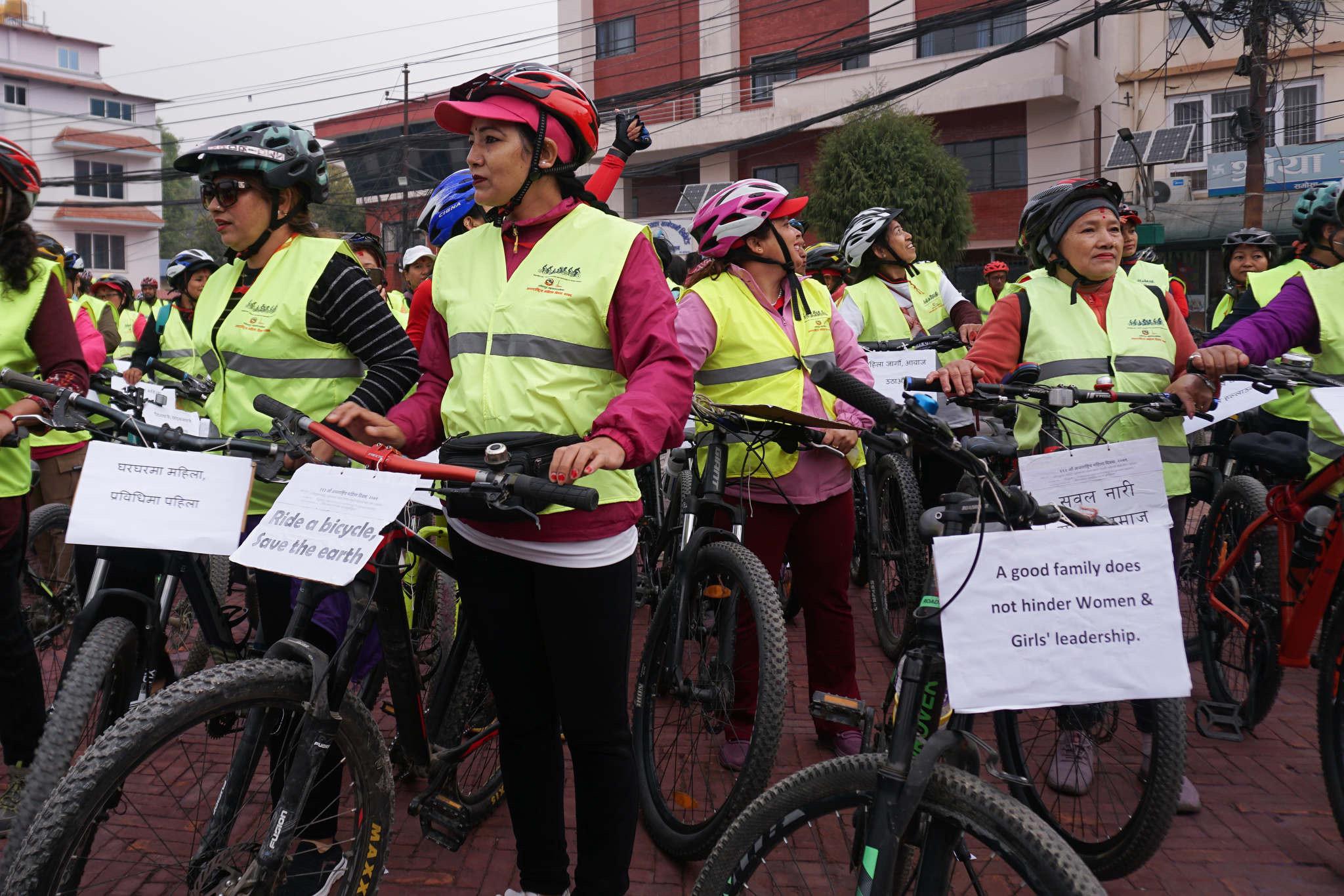
Sunita Neupane
In Lalitpur, members of the Rotaract Club of Patan, Rotary Club of Patan, and Lalitpur Metropolitan City marked International Women’s Day with a cycling and walking rally.
Nepalgunj
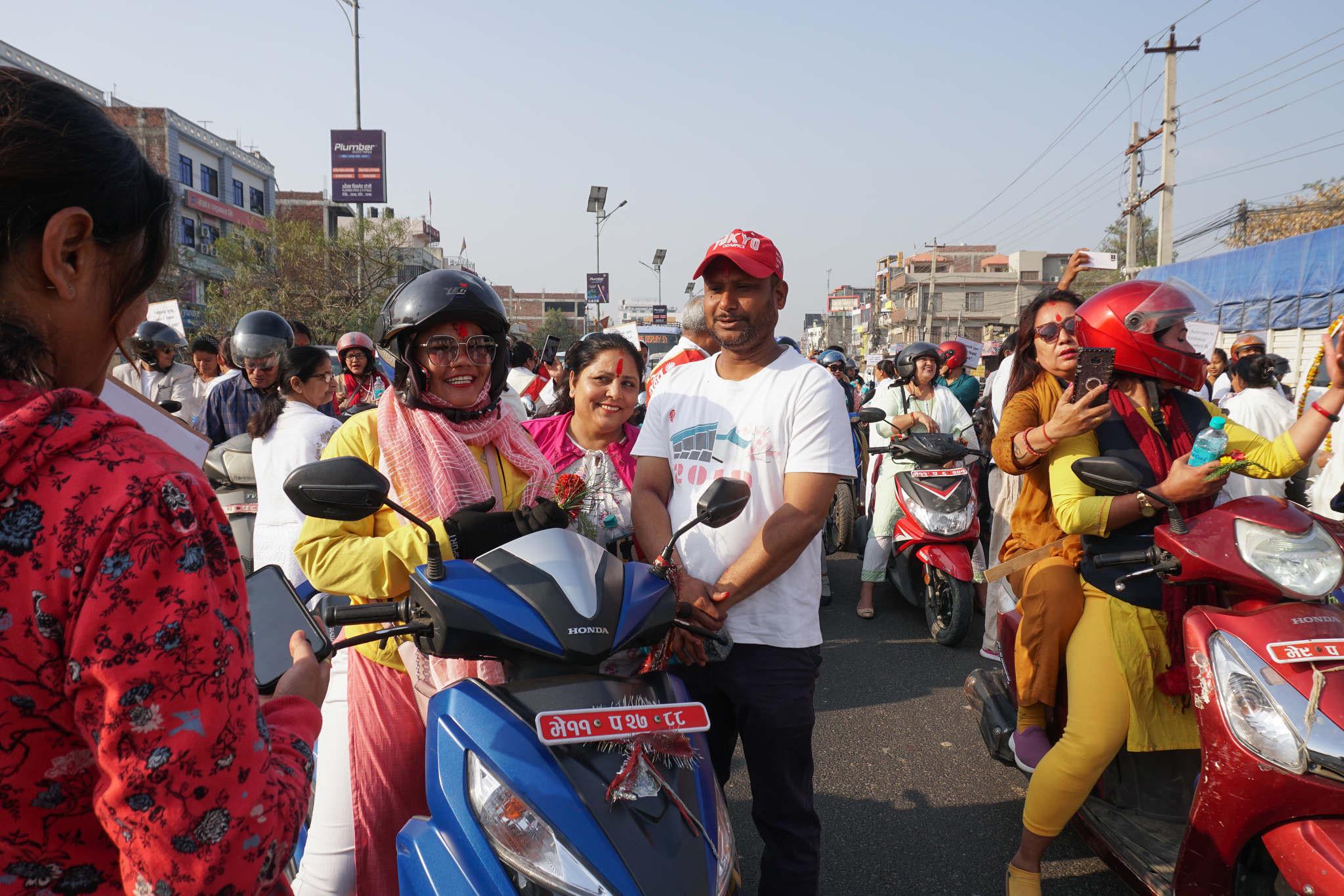
Amrita Jaisi
Nepalgunj marked International Women’s Day with a 7-kilometer (4-mile) cycling race.
Birtamode
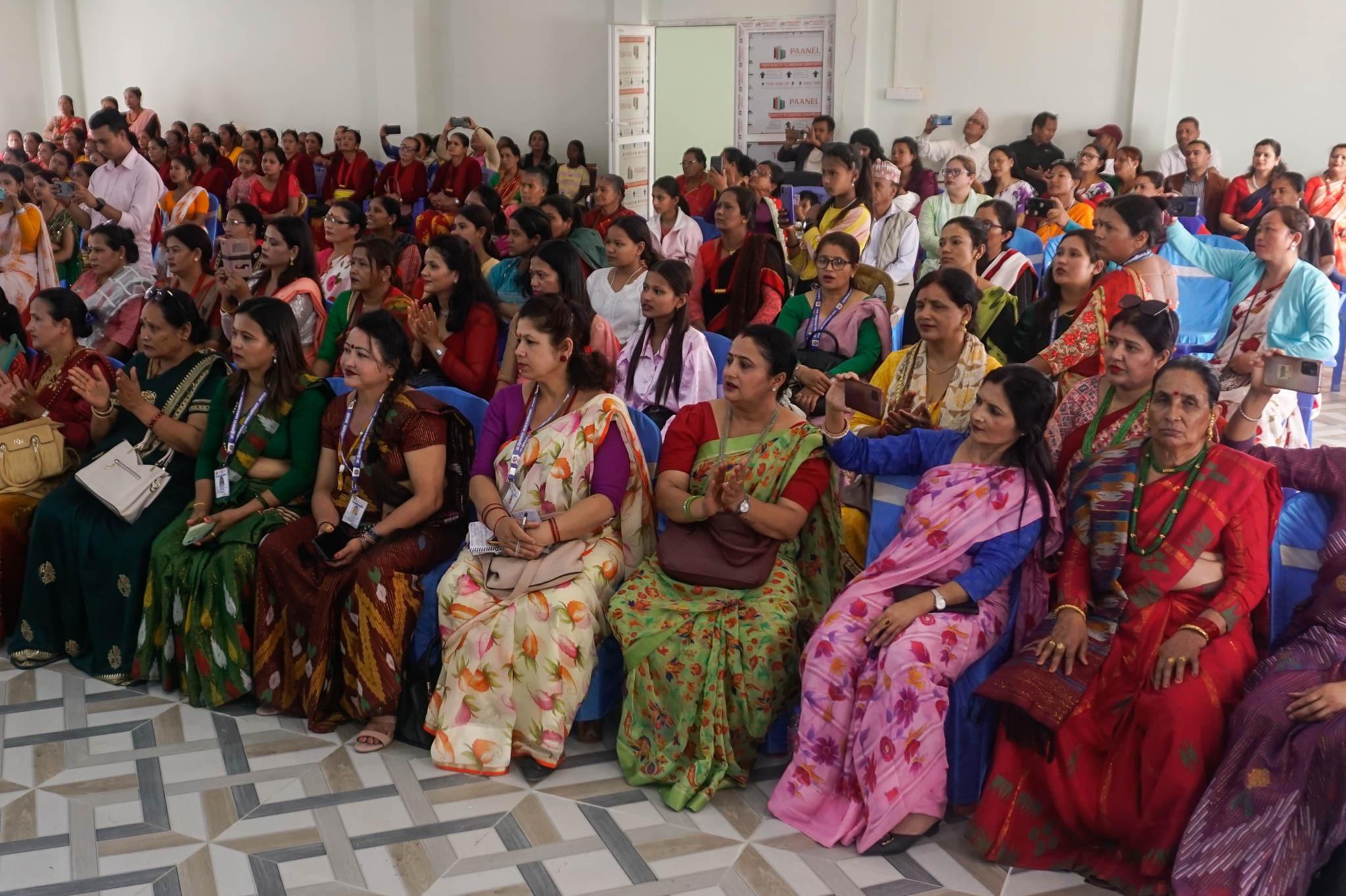
Maya Neupane
In Birtamode, Jhapa district, the Arjundhara municipality hosted members of the Honor Program for Women Over 90 and their guests to mark International Women’s Day.
Kathmandu
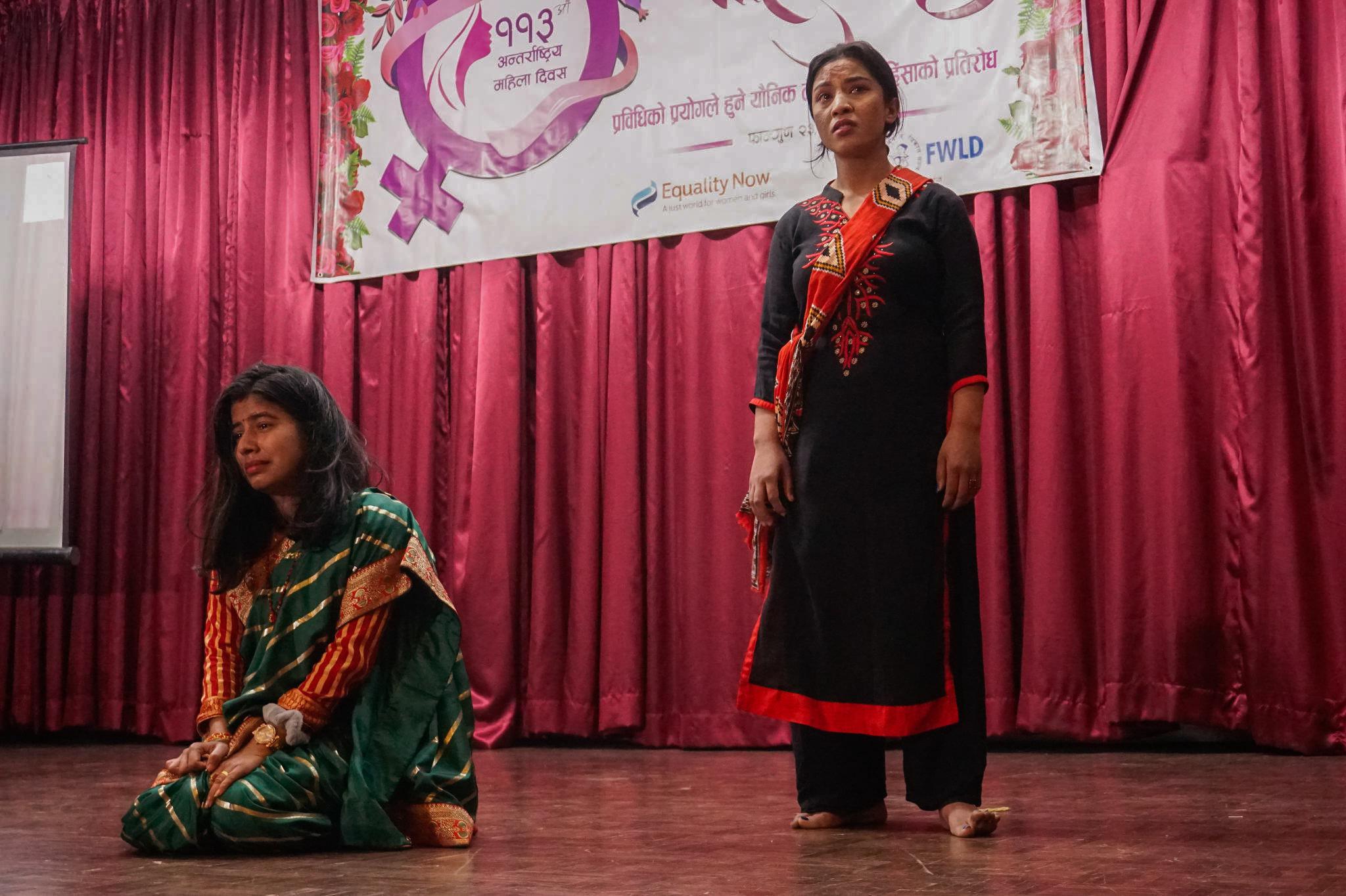
Shilu Manandhar
In Kathmandu, artists staged various performances, including a play to highlight online harassment.
Mongolia

In Mongolia, International Women’s Day is an official public holiday and widely celebrated. Many participated in a flash mob dance, while a kindergarten hosted a ceremony for young girls to celebrate the women in their lives. Others gathered to share success stories and influence more women to participate in the labor force, a key issue in a country where the labor gender gap has been widening. In Mongolia, men make up 60% of the labor force compared to women’s 45%.
Khuvsgul
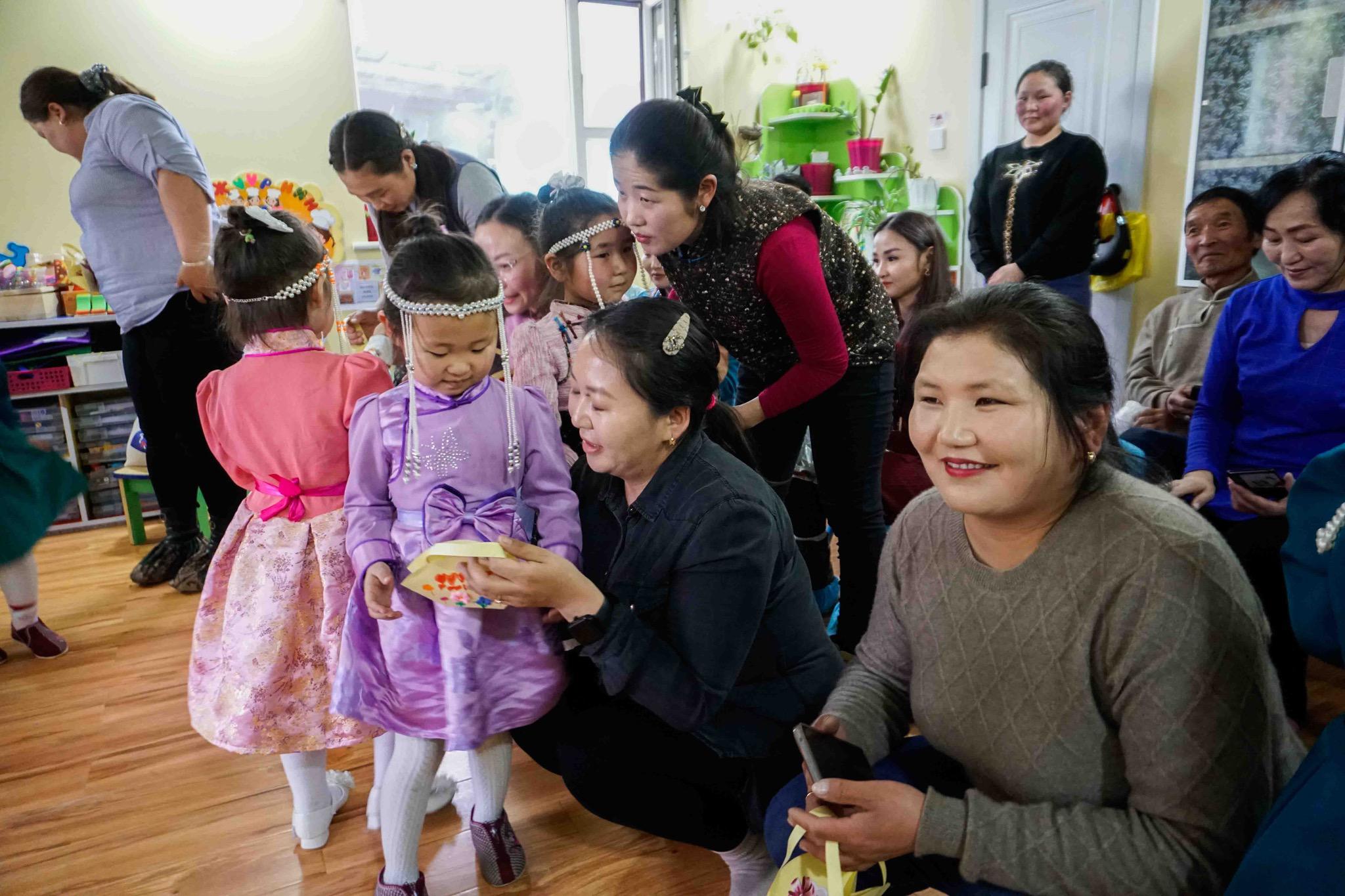
Dolgormaa Sandagdorj
Kindergarteners in Murun, Khuvsgul province, surprised their mothers, grandmothers and sisters by singing national songs in traditional attire. Then, they presented them with handmade artwork.
Ulaanbaatar
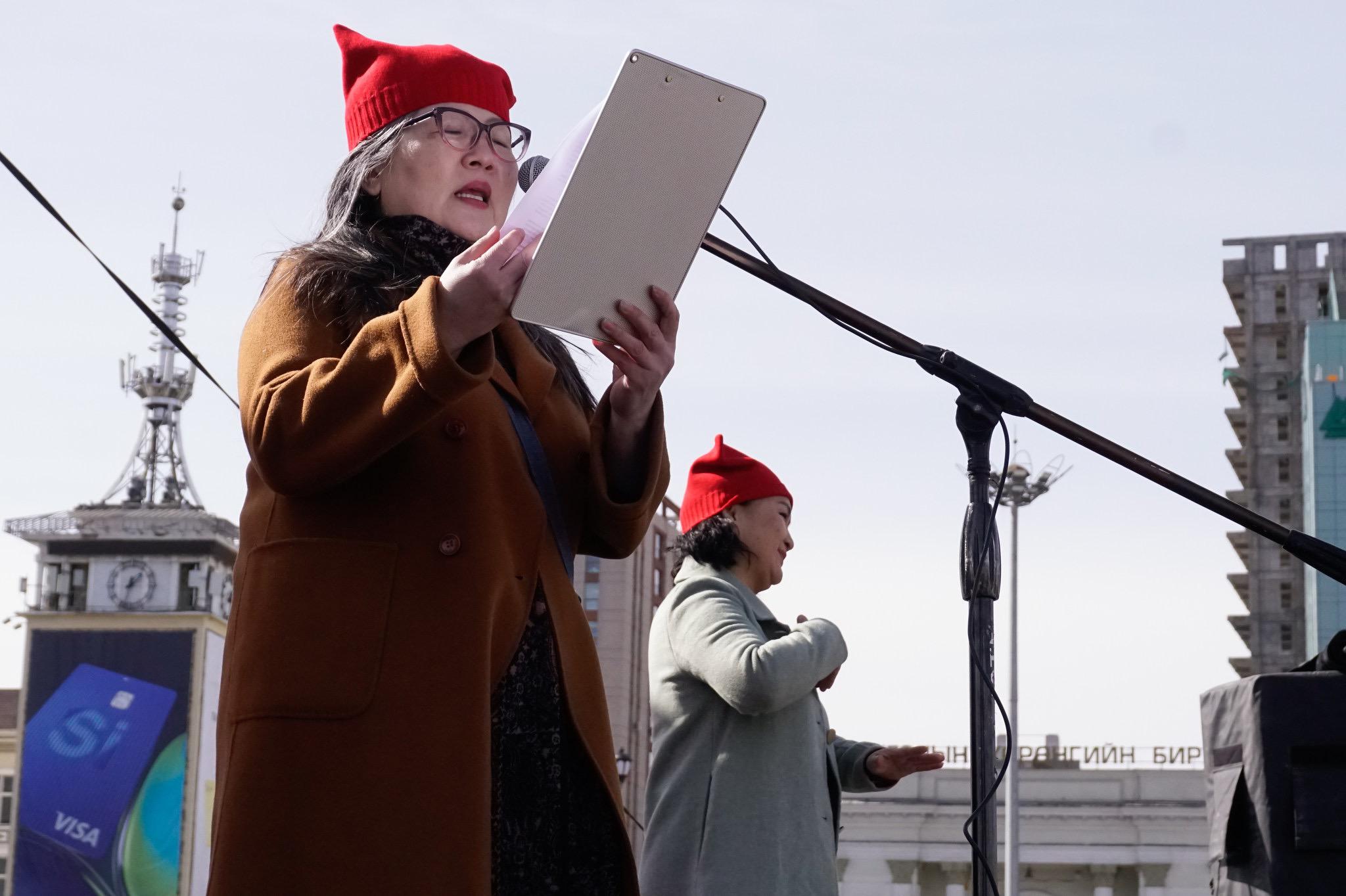
Myagmarsuren Battur
In Ulaanbaatar, Tungalag Dondogdulam reads an anonymous letter from a woman who has experienced domestic abuse. Since 2015, reading these anonymous letters has become part of the One Billion Rising initiative to raise awareness of domestic and sexual violence against women.

Nansalmaa Oyunchimeg
Perenlii Khorloo poses for a picture at a Women in Tech event, which convened tech company directors and founders in Ulaanbaatar. They shared their experiences to empower young people in the industry.
Arkhangai
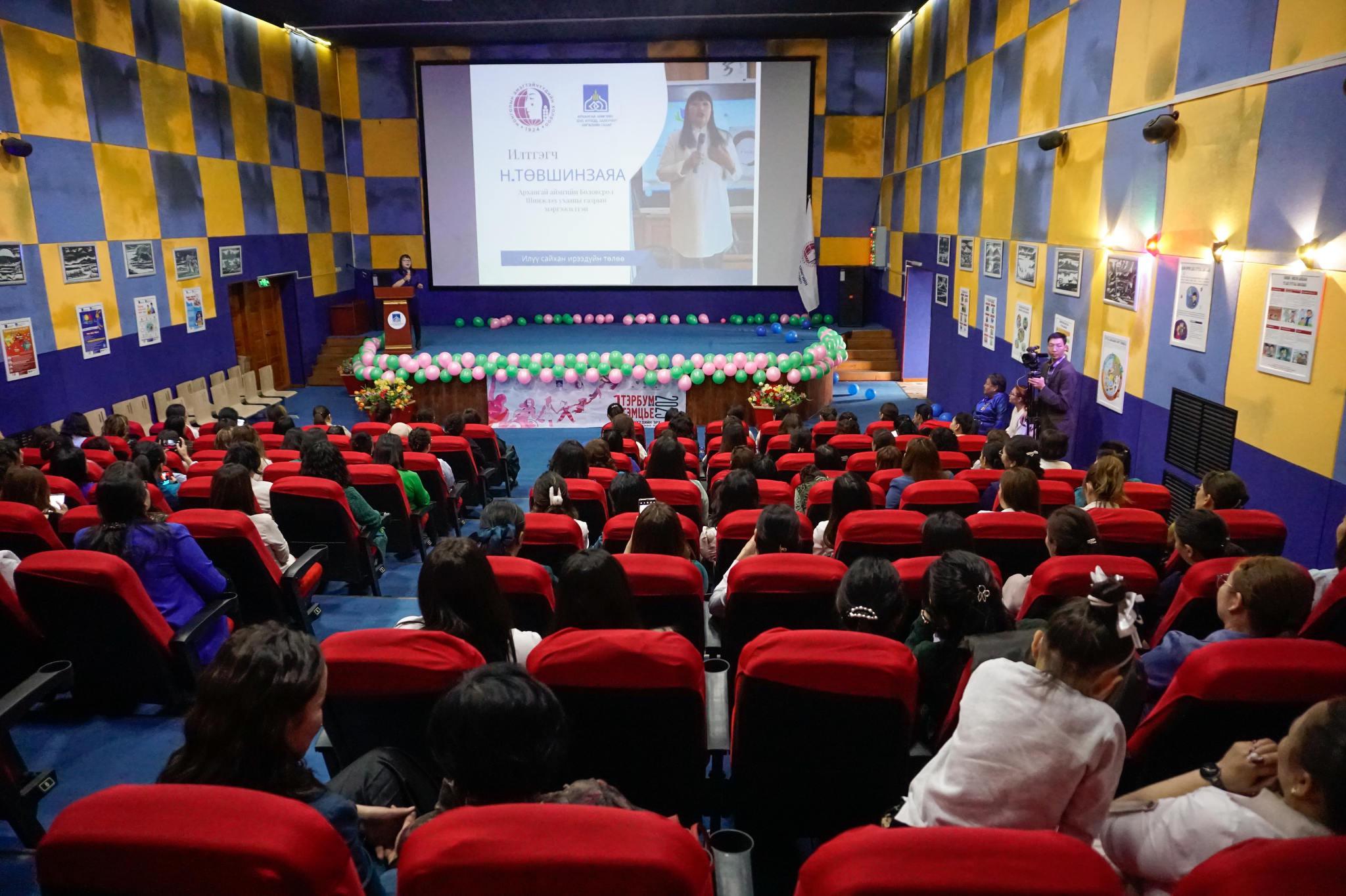
Odonchimeg Batsukh
Tuvshinzaya Nergui, a specialist from the Education and Science Department in Arkhangai province, speaks at an event organized by the Mongolian Women’s Federation. Attendees from various industries shared stories and later joined a One Billion Rising protest to mark International Women’s Day.
Umnugovi
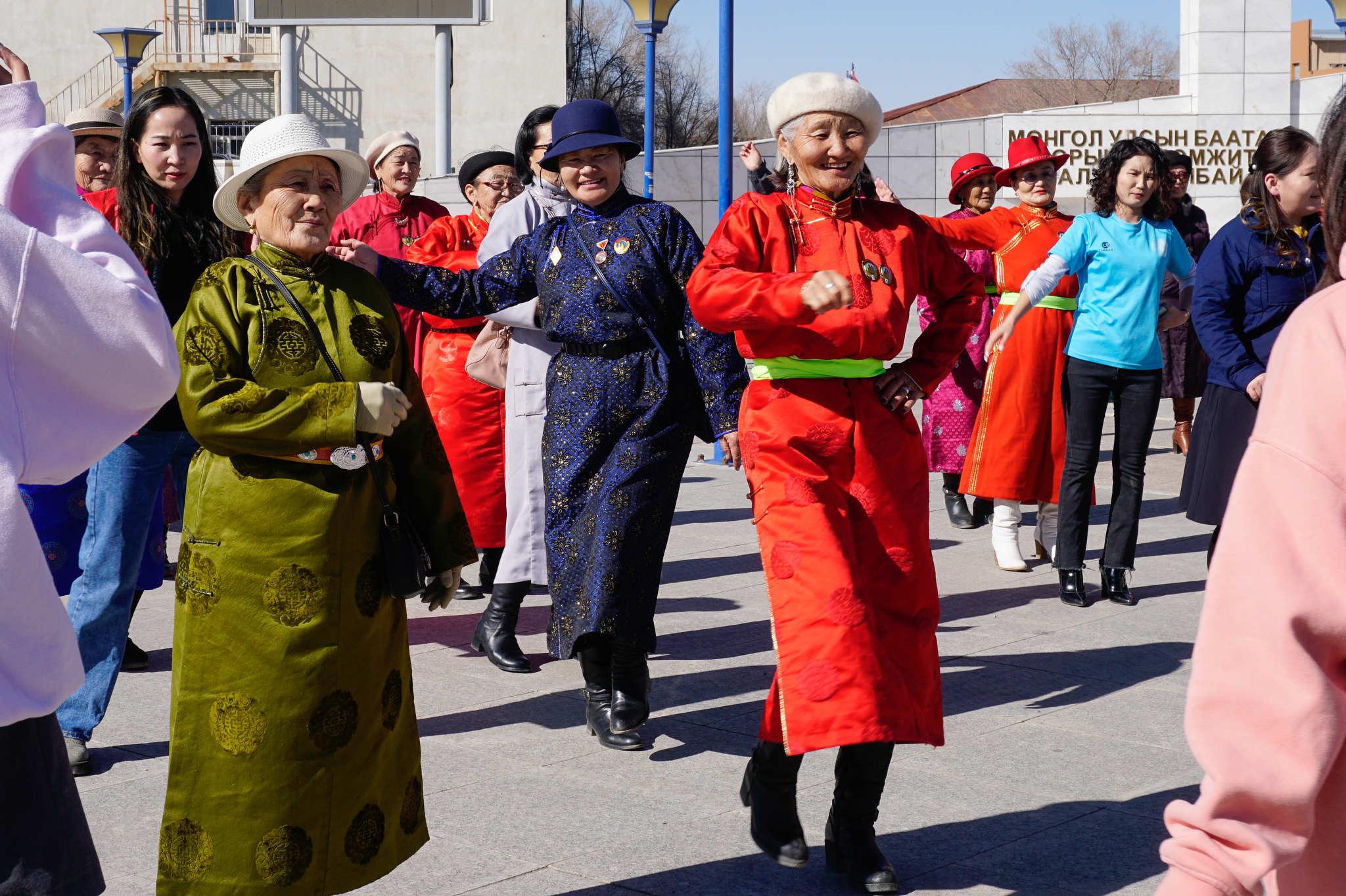
Uranchimeg Tsogkhuu
Women of all ages, including senior citizens, in Dalanzadgad, Umnugovi province, marked International Women’s Day with a flash mob dance.
Zambia

Zambian women joined the worldwide call for gender equality at a parade in Lusaka, which featured platoons of military women and traditional dances. Zambian girls are almost twice as likely as boys to drop out of secondary school, usually because of teenage pregnancy, poverty and an unfriendly environment for girls in school. The women’s literacy rate also trails men’s — 83% to 91% as of 2018.
Lusaka
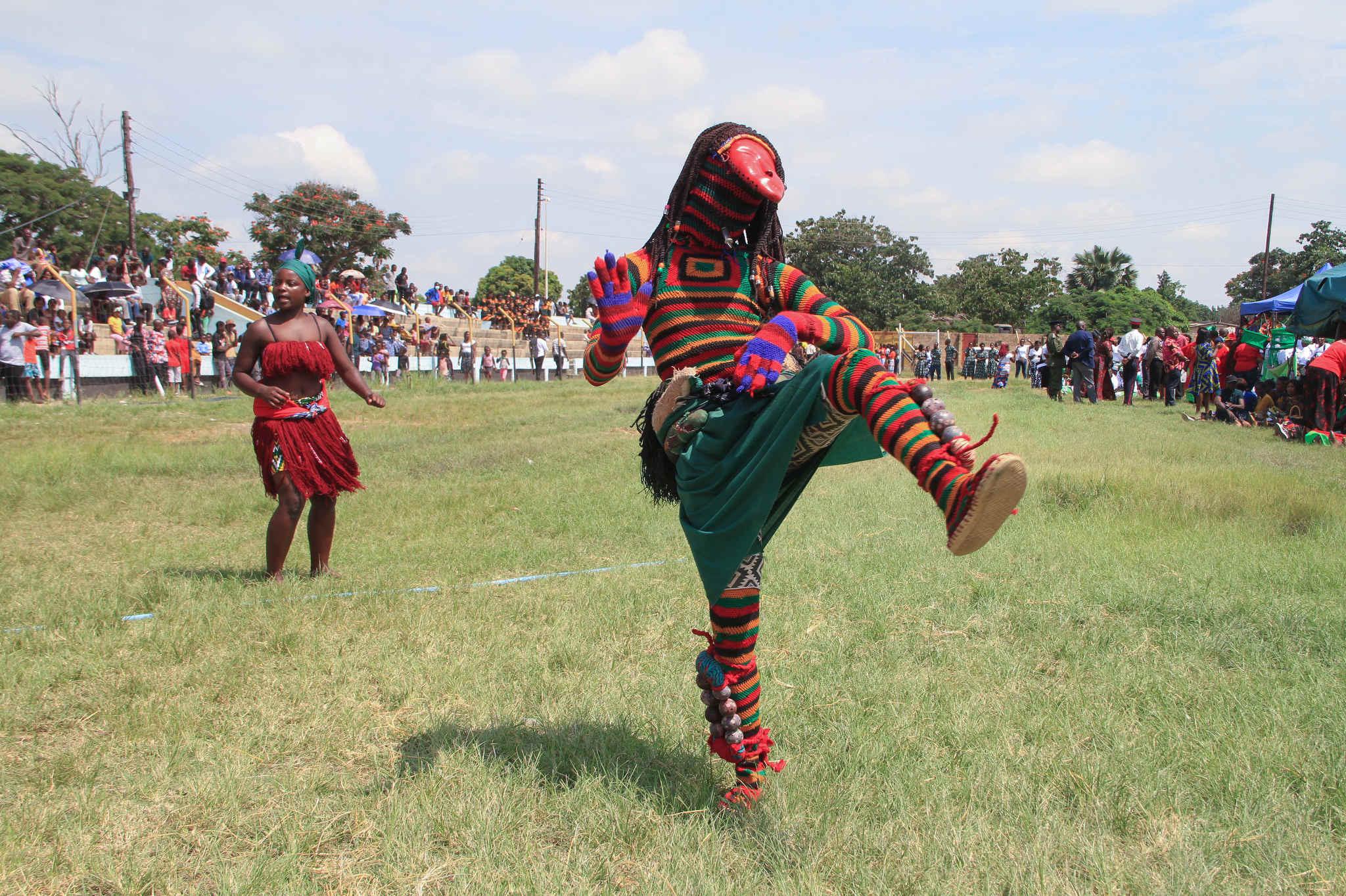
Prudence Phiri
A dancer of Makish, a masquerade traditional of the people of western Zambia, performs after the parade in Kafue, Lusaka, Zambia.
Democratic Republic of Congo

It’s been a tough year for women in eastern Democratic Republic of Congo. While this region has been enveloped in conflict for 30 years, violence has escalated significantly since March 2022, with a wave of clashes between the Congolese army and the armed group M23. More than 390,000 people have been displaced since. In many places this year, the colorful loincloths traditionally worn for International Women’s Day were set aside for white as women called for peace.
Goma

Noella Nyirabihogo
Women displaced by the war in eastern DRC travel by bus to an International Women’s Day event with former first lady Marie-Olive Lembe Kabila in Goma, the capital of North Kivu province. Attendees received loincloths, food and basic hygiene items, and shared a meal with the first lady as women singers entertained the crowd.
Kisangani

Zita Amwanga
Wearing white turbans, women from various organizations in Kisangani gathered in front of Tshopo’s provincial government palace on the morning of March 8 to call for peace in eastern DRC.
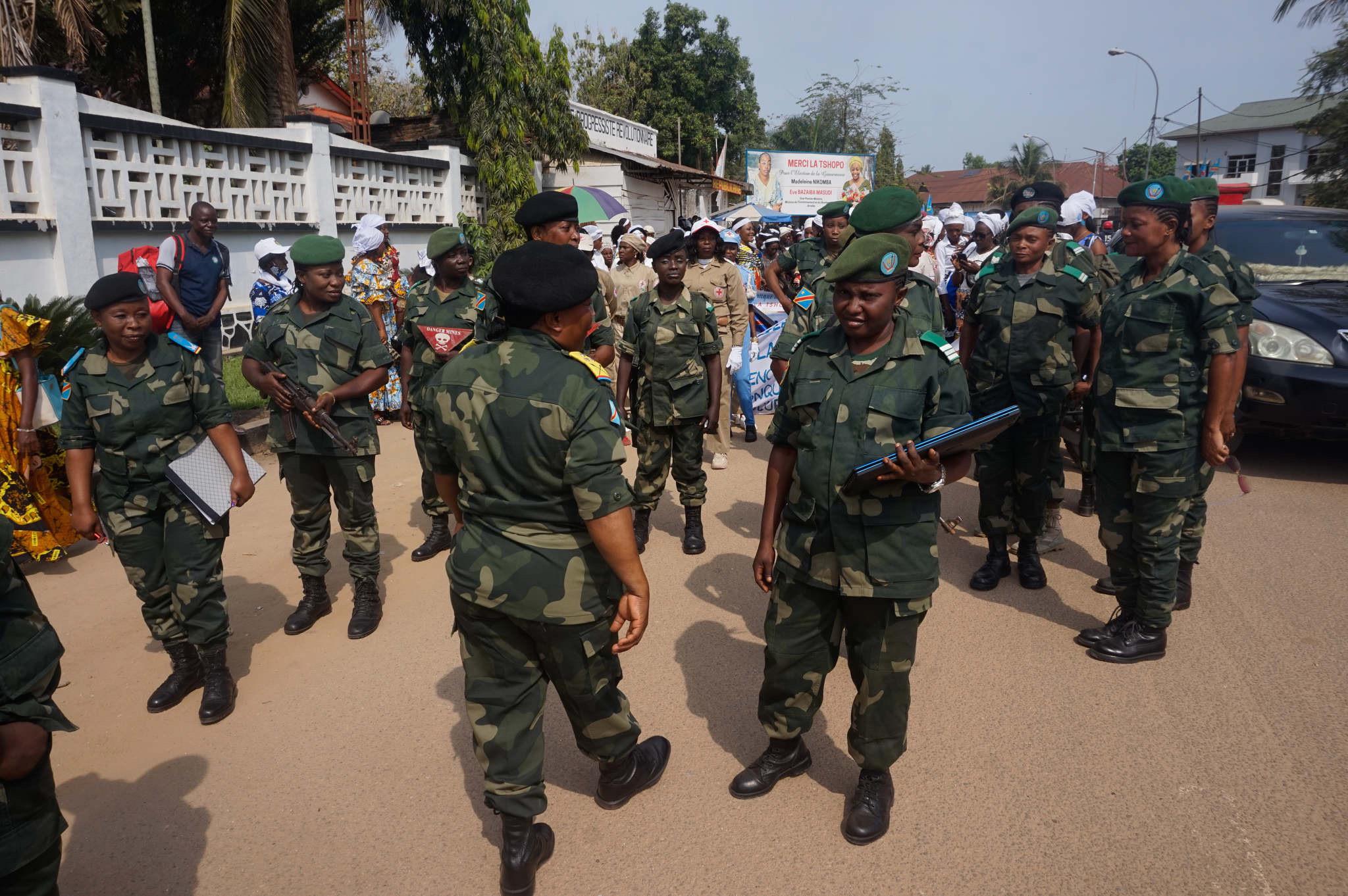
Françoise Mbuyi
Congolese women soldiers march for International Women's Day in front of Tshopo’s government palace in the Makiso commune, in the city of Kisangani, Democratic Republic of Congo.
Uganda

In Kampala, Uganda’s capital, some marked International Women’s Day by celebrating motherhood while others gathered to raise money for equipment for local maternal health clinics. Uganda not only has one of the highest fertility rates in the world but also one of the highest maternal mortality rates, due to a lack of adequate health care facilities.
Kampala
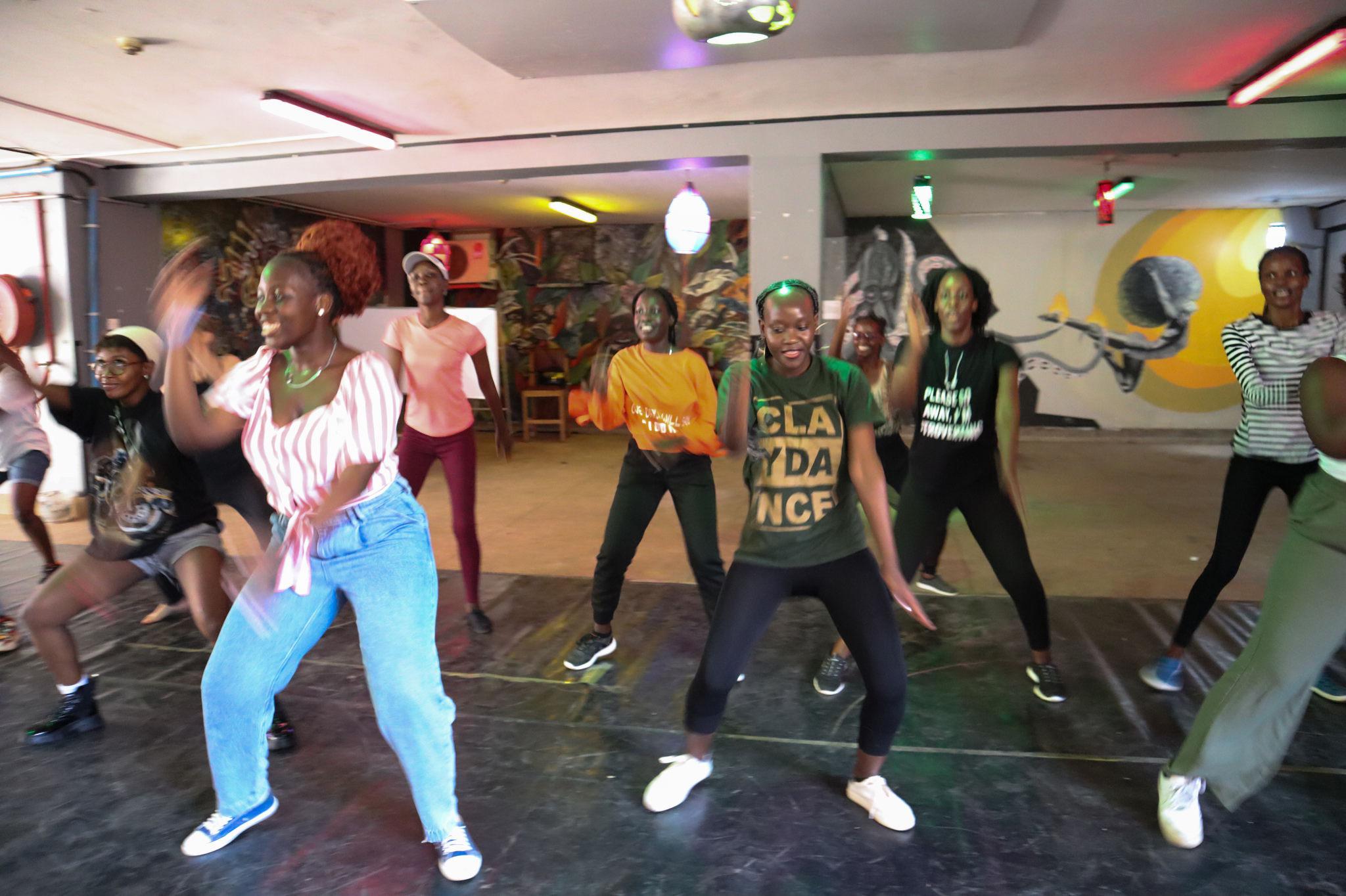
Beatrice Lamwaka
In Kampala, Rosemary Atim celebrated International Women’s Day by teaching a dance workshop that blends urban and African dance styles.
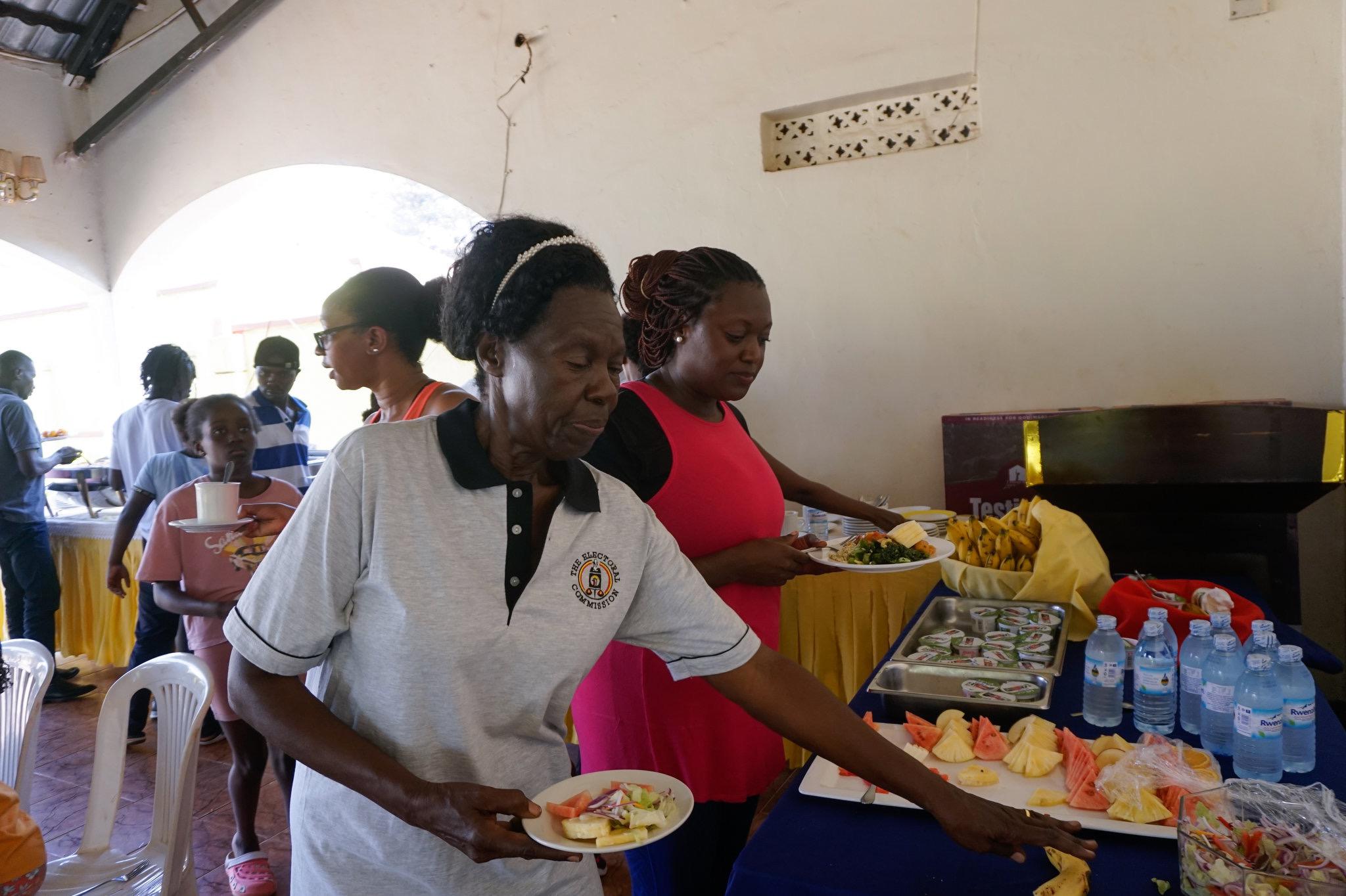
Edna Namara
Women serve breakfast at an event organized by Women’s International Maternity AID, a local nonprofit that raises funds to buy medical equipment for community health facilities.
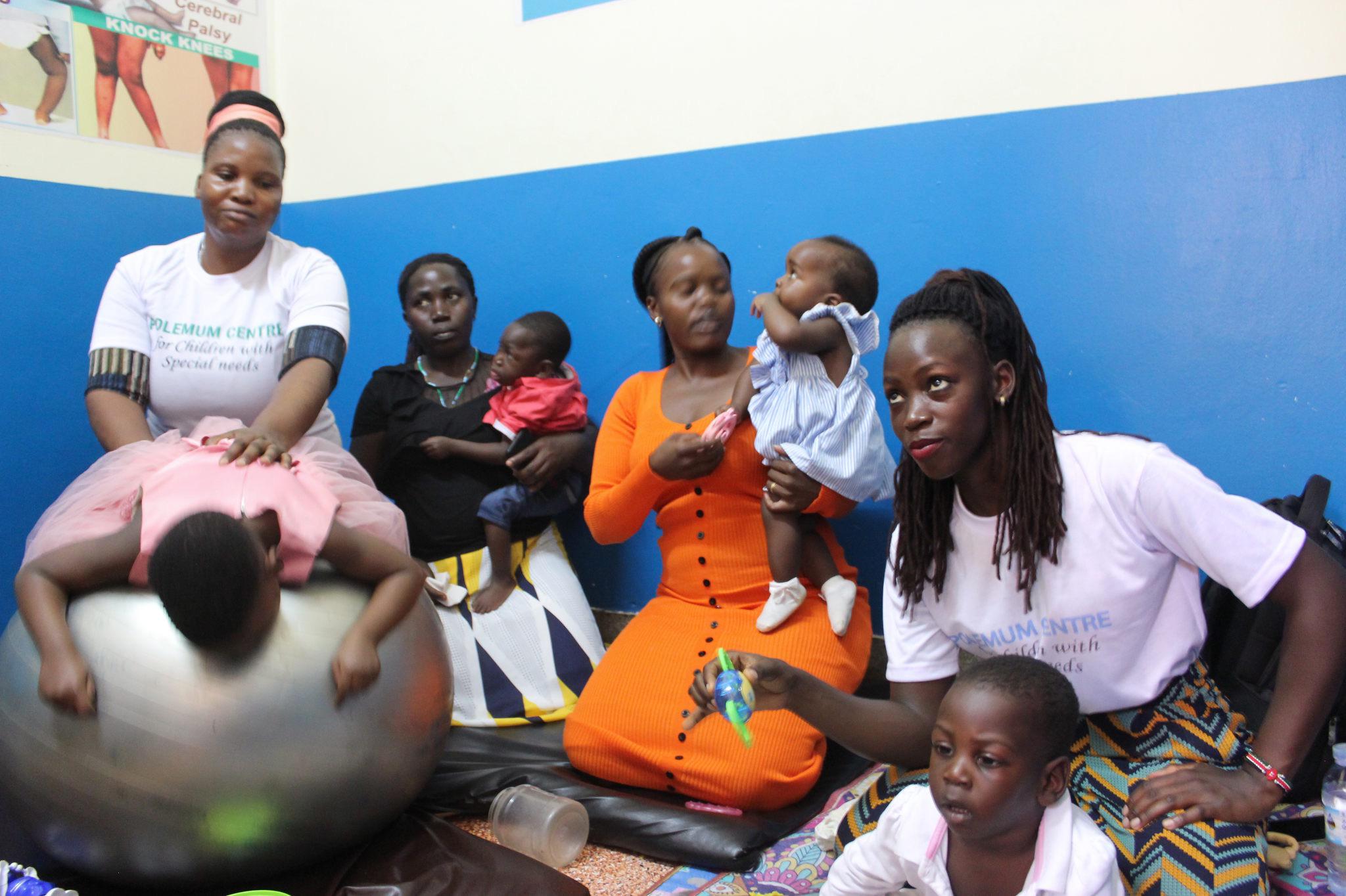
Nakisanze Segawa
Mothers of children with special needs celebrated motherhood at the Polemum Centre in Kampala.
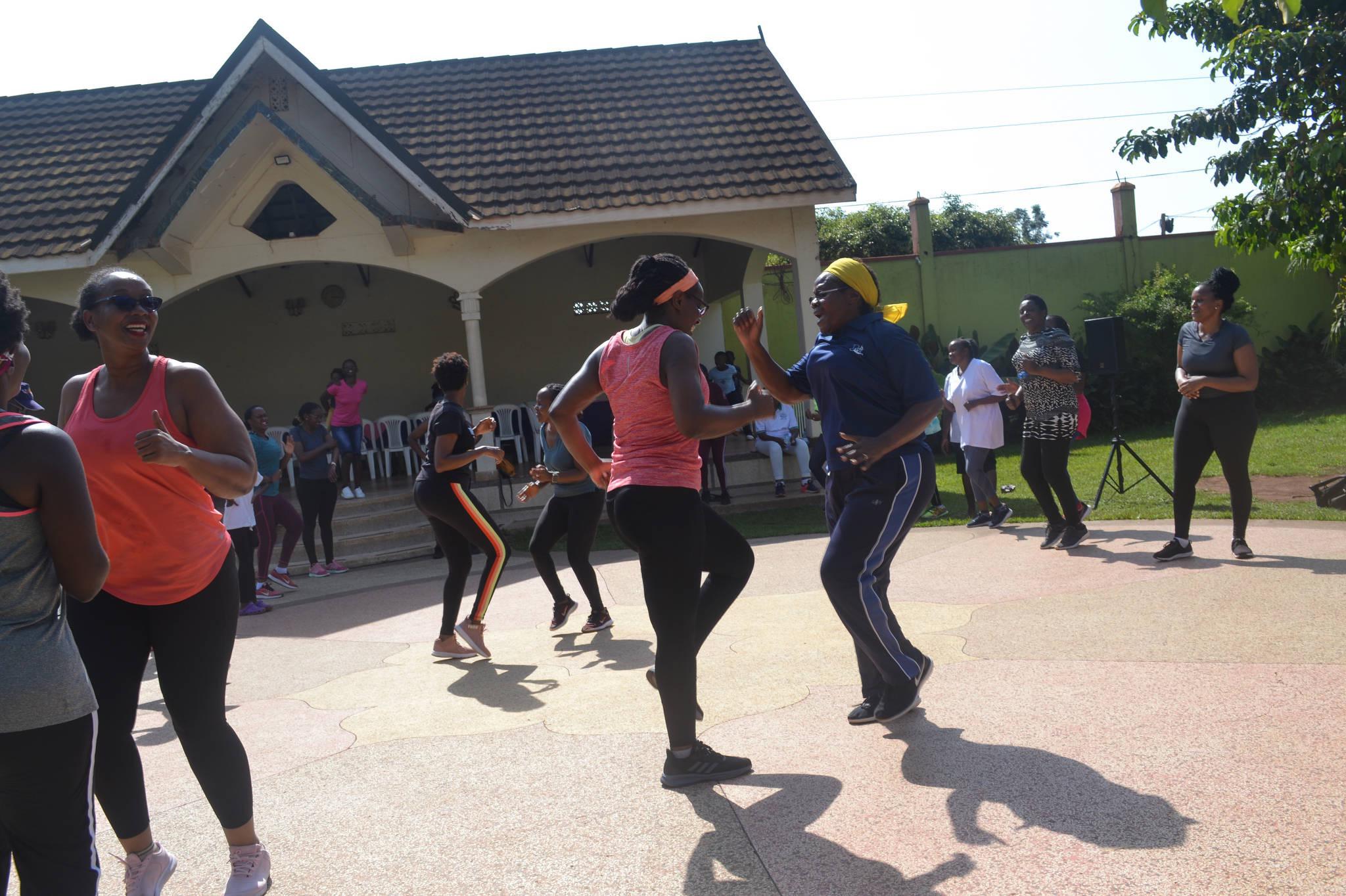
Apophia Agiresaasi
In Naguru, a Kampala suburb, Women’s International Maternity AID, a local nonprofit, held a fitness camp to raise money and buy maternal health equipment for local clinics.
Editorial Team

